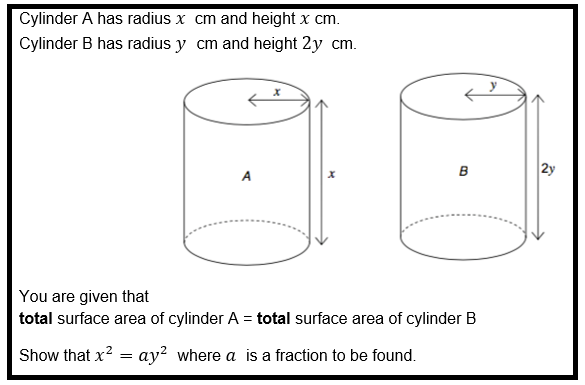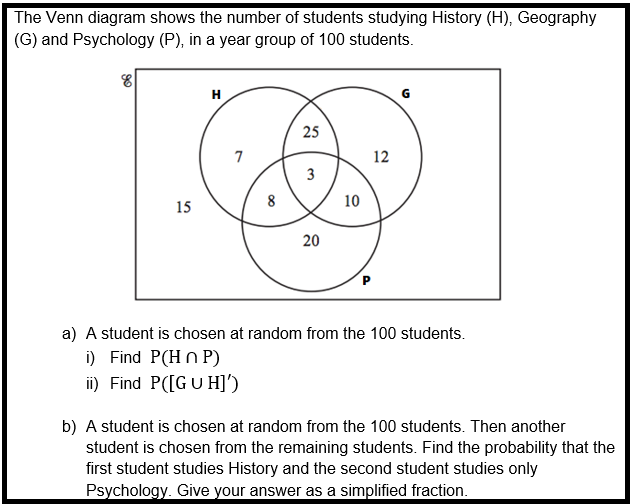Past week I blogged about our Calendar year 8 assessments. I set out the rules we comply with when we write our Critical Phase 3 assessments, and I shared examples of the thoughts that challenged our best attaining pupils.
Modern submit is about Calendar year 9. My school’s Yr 9 cohort has a incredibly wide variety of maths attainment, which was further more exacerbated by the lockdowns in Year 7 and 8. One particular notable feature of this calendar year team is how extremely very good the superior attaining college students are. The best established instructor finds it really hard perform to sufficiently challenge them in classes. So when I designed the conclude of calendar year evaluation, I had to make certain there have been a great deal of concerns in there to make them believe. I do not want any person coming out of a maths assessment bragging that they observed it actually effortless.
Here are some of the a lot more tough concerns from our conclusion of Yr 9 evaluation.
Ratio
At a concert the ratio of males to women of all ages is 5 : 3.
The ratio of girls to children is 7 : 4.
Show that more than half of the people today at the live performance are gentlemen.
A additional complicated ratio concern was this 1 from Edexcel, which also analyzed a different Yr 9 subject: modifying the topic.
The ratio (y + x) : (y – x) is equal to k : 1.
Find a formulation for y in phrases of k and x.
Floor Space
Area location is a fantastic topic mainly because it provides lots of options for trouble solving and reasoning. For instance, this common query may have been relatively straightforward for a large attainer, but I like the way it really is also accessible to anyone who does a little bit of thinking. I was delighted that a number of college students in my class worked this out. We set it in our non-calculator paper so it also tested their arithmetic.
The complete area place of a dice is 294cm2.
Work out the volume of the dice.
A a little additional challenging question was this 1 from Edexcel. It will not have any specifically demanding reasoning in it, but has received a multiple measures to do the job via, which include unit conversion which may well be skipped. I like thoughts the place college students have to determine that they need to operate with surface area place alternatively than volume.
The most tough floor area problem I included was this a person from AQA. Very number of students could do this, even our maximum attainers. We will revisit thoughts like this in 12 months 10.
Bounds
I like this coal problem from WJEC. In Year 9 we teach bounds and error intervals for the initial time. We introduce some simple bounds calculations, but go into greater depth on this at GCSE. This issue fitted properly. However, I thought our college students would obtain it less complicated than they did. I experienced it close to the commence of the paper, but most the college students in my course only picked up just one mark on it. My pupils are all performing at a Quality 4 level while. Our better attaining learners experienced no difficulty with this 1.
Chance
We taught Venn Diagrams to Calendar year 9 this 12 months. There were being some quite straightforward Venn diagram concerns nearer the get started of our stop of yr evaluation, in which pupils essentially just had to full numerous Venn Diagrams. But for problem I needed to take a look at knowing of notation as properly as probability, so I tailored an OCR AS stage query. Only our incredibly very best mathematicians answered this the right way.
Algebraic Proportion
Algebraic proportion can be incredibly procedural. As extended as pupils browse the question meticulously, once they know how to do it, it can be pretty much a assured five marks. So I incorporated a non-calculator proportion question that was a little bit various to inquiries they’d found right before. What I appreciated about this was the accessibility: no one from my class received all the marks, but they did take care of to select up just one or two.
Correct-Angled Trigonometry
This question was my pièce de résistance. I figured that if our tremendous intelligent Yr 9s breezed as a result of all the other tough questions I threw at them, they would undoubtedly have to quit and imagine at this level. This SQA concern is intended to be solved working with the Sine Rule. But our pupils really don’t do the Sine Rule right up until 12 months 10. This concern can be completed with correct-angled trigonometry. The way I did it was by splitting the foundation into x and 350 – x, then forming two equations for the top and equating them. Even if our learners managed to get this considerably, fixing the equation would be quite difficult for them simply because they haven’t noticed just about anything like this before.
As it happened, none of our Calendar year 9s managed to solve it in the way I envisaged. But just one really good university student arrived up with a genius (albeit inefficient!) process of demo and enhancement. I yelped with joy when I realised what he’d carried out:
It truly is these kinds of a delight to see students utilizing inventive ways like this.
I also located some great challenging queries involving conventional form and percentages, but I will halt at this issue otherwise this website post will go on for good! Like I mentioned in my past write-up, there are quite a few locations we can obtain very good assessment thoughts for Important Phase 3. It really is a disgrace they are not centrally made any more – the aged KS3 SATs contained good thoughts, but at minimum we can even now draw on these to make our very own assessments.
If you have any superior Yr 9 assessment inquiries you would like to share, you should tweet me.
Thanks for examining!











